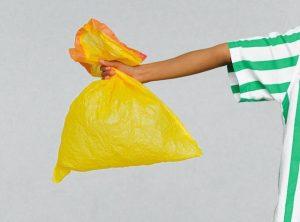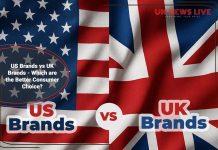In an age where single-use plastic is a major contributor to landfill overflow and carbon emissions, opting for eco-friendly packaged products is more than a trend—it’s a small habit with big environmental payoffs.
Whether you’re browsing aisles in Tesco or clicking through Amazon, spotting greener packaging can feel tricky.
Here are seven compelling reasons to make the switch, along with practical tips for identifying eco-packaging in stores and online, plus an overview of how traditional and sustainable materials stack up.
1. Reduce Plastic Pollution

Conventional packaging relies heavily on petrochemical plastics that can linger in landfills and oceans for centuries. By choosing products in paper, cardboard or certified compostable films, you help reduce microplastic shedding and protect marine life. Every choice for biodegradable or easily recyclable packaging means fewer plastic particles entering our waterways.
2. Lower Your Carbon Footprint
Producing sustainable packaging as SPG Pack does—especially when made from recycled or rapidly renewable sources like bamboo or sugarcane—usually requires less energy and emits fewer greenhouse gases than virgin plastic manufacturing. Over time, that adds up to a measurable reduction in your personal carbon footprint, helping the UK meet its net-zero targets.
3. Boost Corporate Responsibility
When you buy a brand that invests in eco-packaging, you’re voting with your wallet for sustainable business practices. Companies pay attention to consumer demand: a rise in eco-packaged sales can nudge larger manufacturers to reformulate and redesign, spurring industry-wide change and impacting government sustainability support too.
4. Support Circular Economy Principles

Eco-packaged items often participate in closed-loop recycling schemes. Look out for the green “Mobius loop” symbol, which indicates the packaging is recyclable. Some brands even use refillable pouches or return-to-manufacturer programmes, ensuring materials stay in use rather than becoming waste.
5. Preserve Natural Resources
Standard packaging often relies on virgin materials: fresh trees for paper, new oil for plastic. Eco options typically use post-consumer recycled content, reducing the demand for raw resources. That preserves forests, cuts down on drilling, and conserves water in manufacturing processes.
6. Enjoy Health and Safety Benefits
Eco-packaging often steers clear of harmful additives, heavy-metal inks and plasticisers that can leach into food and beauty products. Choosing glass, aluminium or certified food-safe compostable wrappers means fewer chemicals touching your groceries or toiletries.
7. Future-Proof Your Lifestyle

With the UK’s Plastic Packaging Tax and upcoming regulations on single-use plastics, eco-packaged items are likely to become mainstream—and more affordable. Early adopters enjoy a wider selection of innovative materials and design, from water-soluble sachets to plant-based trays.
How to Identify Eco-Friendly Packaging
Whether you’re in Sainsbury’s or scrolling through Amazon, these quick checks will help you spot greener choices:
Look for Certifications
– FSC or PEFC for sustainably sourced paper and cardboard.
– OK Compost or Seedling logo for industrial or home compostability.
– Recycled Content label (e.g., “Made with 80% PCR”).
Check Material Descriptions
– Avoid unmarked plastics—if it’s not labelled PET, HDPE or PP, it’s probably hard to recycle.
– Seek out plant-based plastics (PLA, PHA) but verify certification, as not all compostable plastics break down in home bins.
Use Eco Online Filters
– Many UK e-retailers now let you filter by “eco-friendly” or “sustainable” packaging.
– Read product descriptions for mentions of minimal-pack or refill-ready designs.
Inspect Packaging Weight and Layers
– Multiple laminated layers (film, foil, paper) are often non-recyclable.
– Single-material solutions—paperboard cartons, glass jars—are your best bet.
Eco vs. Conventional: A Material Breakdown
| Material | Conventional Packaging | Eco-Friendly Alternative | Environmental Impact |
| Plastic film | Single-use LDPE, PVC laminates | Compostable PLA, recycled LDPE | Eco alternatives reduce virgin plastic demand |
| Cardboard & paper | Virgin pulp with chemical bleaches | Recycled paper, unbleached kraft board | Saves trees, lowers water and energy consumption |
| Rigid containers | Mixed-resin plastic pots | Glass jars, aluminium tins (100% recyclable) | Glass/aluminium infinitely recyclable, less landfill |
| Labels & inks | Solvent-based, heavy-metal dyes | Water-based, soy or vegetable-based inks | Safer disposal, lower VOC emissions |
The Big Picture: Why the Packaging of Your Shopping Matters
Packaging isn’t just a wrapper—it represents around 40% of the plastic used in the UK. When we fail to recycle or when composite materials end up in landfills, they emit methane and leach toxins into the soil and water. By choosing eco-packaged products, you’re part of a collective shift towards responsible consumption, where resources circulate rather than accumulate as waste.
Your next shopping trip can become an act of environmental stewardship. Start small—opt for a paper-wrapped sandwich, grab a refillable laundry pouch, or switch your skincare to brands with post-consumer recycled tubs. Over weeks and months, these choices add up to a greener, healthier planet for everyone.





























